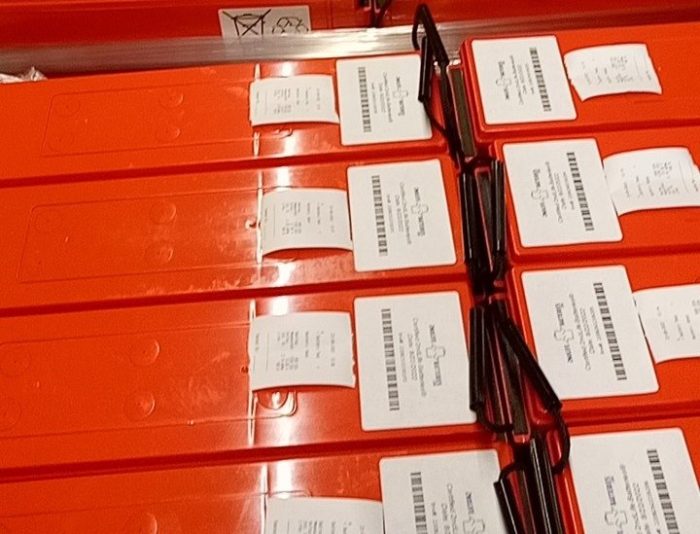
Energy storage is booming for those who can afford it, but the upfront cost can be daunting for low- and middle-income (LMI) households and small businesses. One option for cost-sensitive storage customers is recycled batteries that may only cost half of a typical lithium-ion battery installation.
EnergySage pegs the average price of a battery storage system in California at $12,892 for a 10 kWh system, and $25,785 for a 20 kWh system. Add to that the cost of a solar array to charge the batteries, and the total solar + storage bill quickly can double or triple.
At these prices, proprietary battery storage systems on the market including Tesla, Enphase and a host of others, typically offer 10-year warranties on their products. Recycled batteries may only last three to five years, but the upfront cost of a system can be halved, according to John Kincaide, President of 2ndLife Batteries, based in Alden, NY. That means more households and more businesses can pony up the cost of adopting battery storage.
Extending the life of lead-acid
2ndLife’s lead-acid Enersys SBS 190F absorbent glass mat (AGM) battery offers 190 amp hours, or 9.12 kWh for a 48 volt system comprised of four batteries in serial configuration. The batteries, often acquired from telecom companies that switch out batteries early to guarantee performance, are sourced in France or the United Kingdom, but his company is widening its sourcing of used batteries globally, Kincaide recently told SB.
“Our lead acid batteries work for 8-10 hours and discharge overnight. They are well-vetted and don’t cause problems,” says Kincaide. He is keenly aware of the state of recycled batteries in the industry since he serves on the Recycling Committee of the National Alliance for Advanced Transportation Battery Cell Manufacture (NAATBatt) and is the co-chair of both the Second Life Committee and the Track and Trace Committee. These committees represent about 30 different companies.
Assuring the quality of recycled batteries means careful selection of the batteries from the sources, and multiple testing rounds, Kincaide says. “We’re very selective and make sure that we are working with something that’s originally trusted by the telcos that are using them. The telcos put them through only 10 or 20 cycles before switching them out but they have hundreds of cycles left,” he notes.
2ndLife exclusively uses AGM batteries because of their stability. The AGM design incorporates a fine glass fiber separator between the positive and negative plates that helps absorb all the battery acid. Unlike liquid lead-acid batteries, there is no possibility of spills or off-gassing. And AGM batteries ship without Hazmat precautions needed for liquid lead-acid batteries.
Demand for recycled battery storage
Since its inception in 2017, 2ndLife has shipped about 9 MWh of recycled batteries, and the company has a pipeline of between 1 and 3 MWh batteries available, Kincaide says. Most sales are in the United States and Canada, but sales to grid-challenged islands like Puerto Rico are expanding quickly, he notes.
“In Puerto Rico the average household income is about $30,000 per year compared with the mainland United States where it is closer to $75,000. So, customers in Puerto Rico are able to afford batteries because they sell at $88 per kWh,” Kincaide says. His company sold 400 kWh of recycled batteries to customers on the island during the first year of sales there.
The demographics of U.S. household income suggest there is a very large market for recycled battery storage systems. “About 50% of households earn $69,000 or less, and of that number, 35% or about 50 million households earn less than $36,000 a year. I think the fact is that some people can’t afford batteries with a 10-year life,” Kincaide says.
U.S. LMI battery storage projects are a target market for 2ndLife since more and more municipal and state renewable energy policies carve out incentives specifically for LMI projects. The company is developing an LMI project in upstate New York now.
One strong feature of lead acid batteries is that they will perform at zero degrees. “Lithium-ion won’t do that,” Kincaide notes. Thus, residential and commercial battery storage systems in the northern regions can rely on lead-acid systems more so than on lithium-ion during cold periods.
Recycling costs as environmental factor
Apart from the lower cost and reliable performance of a recycled lead acid battery system, the environmental value of the 98% recycling of lead acid batteries in North America is attractive to many customers, Kincaide says.
While lithium ferro phosphate (LFP) batteries may be the most popular chemistry in the battery storage market now, they cannot be economically recycled yet. “The cost of LFP recycling is dropping, but today it’s only down to about negative $17 per kWh,” he reckons.
“The Chinese are recycling lithium-ion because they’ve got a mandate. So once they’re recycling at the scale of 25,000 or 50,000 metric tons, the cost gets to be close to zero. This also will eventually happen in North America, but we’re going to have to wait until 2030 or so. It’s a long way out before we get to that scale here.”
— Solar Builder magazine
[source: https://solarbuildermag.com/news/recycled-batteries-foster-equity-in-energy-storage/]

Leave a Reply
You must be logged in to post a comment.